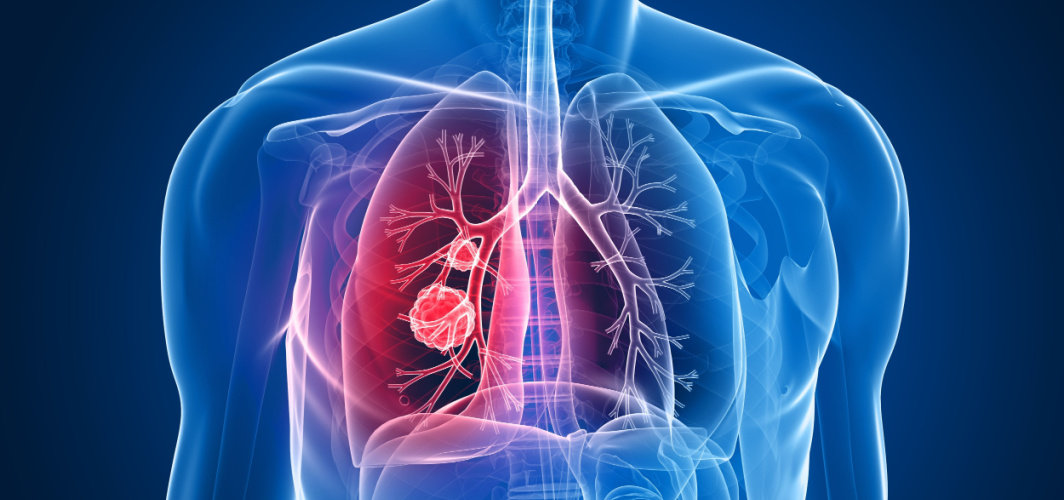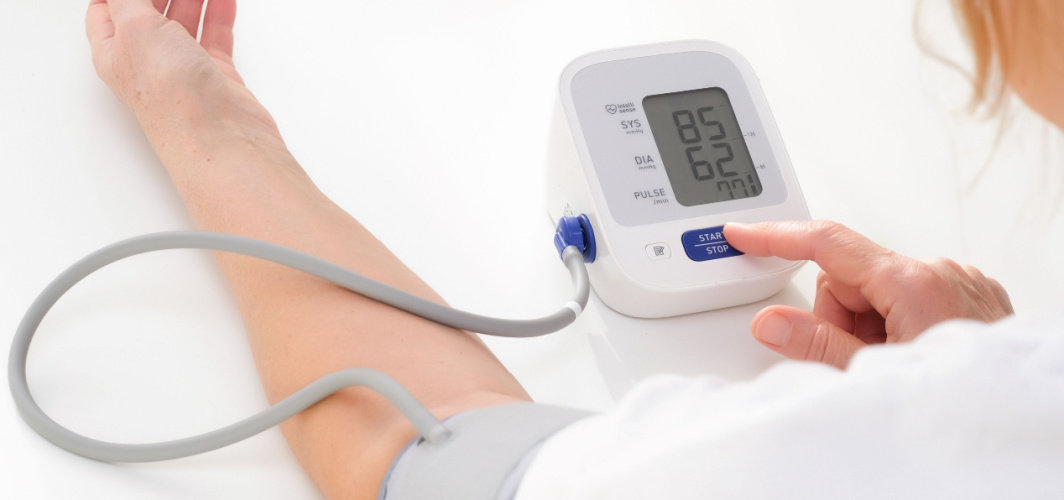- Home
- Blog
- General Health
Lung Cancer: Symptoms, Causes, Treatment, and Prevention
General Health
Lung Cancer: Symptoms, Causes, Treatment, and Prevention
By Apollo 24|7, Published on- 10 July 2023, Updated on -22 August 2024
Share this article
0
0 like

Lung cancer is the second most commonly reported cancer worldwide, affecting many individuals yearly. However, despite the challenges, advancements in treatments have paved the way for a decline in lung cancer deaths, offering new options for patients. This article will explore the symptoms, causes, treatment options, and preventive measures associated with lung cancer, providing a comprehensive understanding.
What is Lung Cancer?
Lung cancer causes the growth of abnormal cells in the lungs. There are majorly two types of lung cancer: non-small cell lung cancer and small cell lung cancer.
1. Non-Small Cell Lung Cancer (NSCLC)
NSCLC is the most common type, making up 85% of cases. It grows slowly and has different subtypes: adenocarcinoma (common in outer lungs), squamous cell carcinoma (central airways), and large cell carcinoma (less common but aggressive).
2. Small Cell Lung Cancer (SCLC)
SCLC is less common but spreads quickly. It begins in the bronchi (ducts connecting the windpipe to the lungs) and is strongly linked to smoking. SCLC has fast-growing small cells and often spreads to organs like the liver, brain, and bones.
Other relatively rare types of cancer affecting lungs include:
- Carcinoid tumours: These tumours originate from neuroendocrine cells (nerve cells that make hormones) and are usually slow-growing. They account for a small percentage of lung cancers.
- Sarcomas: Sarcomas are rare tumours that develop in the supportive tissues of the lungs, such as blood vessels, cartilage, or muscle.
- Mesothelioma: This cancer affects the lining of the lungs (pleura) and is commonly caused by exposure to asbestos fibres.
What are the Stages of Lung Cancer?
Lung cancer stages are based on various factors, including the size of the tumour, its location, whether it has spread to nearby lymph nodes, and if it has metastasized (spread) to other organs.
- Stage 0: Earliest stage, cancer cells are limited to the innermost layer of airway cells, with no invasion of deeper tissues or spread to lymph nodes/organs.
- Stage I: Localized cancer (limited to lung) and has two subcategories: IA (smaller tumour size) and IB (slightly larger tumour), with no spread to nearby lymph nodes.
- Stage II: Larger tumour or the one that spreads to nearby lymph nodes, divided into IIA and IIB based on tumour characteristics and lymph node involvement.
- Stage III: Cancer spreads further within the lung, reaches nearby structures or lymph nodes, and is divided into IIIA and IIIB based on tumour size, location, and lymph node involvement.
- Stage IV: Most advanced stage, metastatic lung cancer, spread to other organs/distant body parts (liver, bones, brain, distant lymph nodes).
Small Cell Lung Cancer: Exploring Limited and Extensive Stages
Doctors often discuss whether your SCLC is limited or extensive. This means:
1. Limited Stage
The cancer is confined to one lung or the nearby lymph nodes on the same side of the chest. This stage is typically more responsive to treatment options such as chemotherapy and radiation therapy.
2. Extensive Stage
The cancer has spread beyond the lung to distant lymph nodes or other organs in the body. This stage is considered more advanced and often requires a combination of chemotherapy and targeted therapies.
What is Metastatic Lung Cancer?
Metastatic lung cancer, or stage IV lung cancer, occurs when cancer cells from the lungs spread to other parts of the body. Treating metastatic lung cancer is challenging due to the widespread presence of cancer cells in distant organs, making complete eradication difficult.
Treatment focuses on managing symptoms, improving quality of life, and slowing the disease's progression with the help of chemotherapy, targeted therapy, immunotherapy, or radiation therapy.
Lung Cancer Symptoms
While some individuals may not experience any symptoms until the cancer has advanced, others may notice one or a few of the following signs:
- Swelling in the upper chest
- Persistent or worsening cough
- Shoulder pain
- Hoarseness
- Difficulty breathing or shortness of breath
- Coughing up blood
- Chest pain or discomfort
- Wheezing
- Loss of appetite
- Unexplained weight loss
- Persistent fatigue
- Small pupil and drooping eyelid
A persistent cough or pneumonia after treatment can be an early sign of lung cancer, although it can also indicate less severe conditions. Hence, regular lung cancer screening is crucial, particularly for individuals at higher risk.
Factors that can Increase the Risk of Lung Cancer
The primary and most significant risk factor for lung cancer is smoking, including using cigarettes, cigars, or pipes. Apart from that, other factors can increase the risk too, including:
1. Exposure to secondhand tobacco smoke: Breathing in the smoke emitted by others who are smoking can also contribute to developing lung cancer.
2. Exposure to harmful substances: Inhalation of certain toxic substances can increase the risk of lung cancer. These substances include air pollution, asbestos, uranium, diesel exhaust, silica (found in certain types of dust, such as those produced in construction or mining), and coal products.
3. Previous radiation treatments: If you have received radiation therapy to the chest in the past, such as for treating breast cancer or lymphoma, it can increase the risk of developing lung cancer.
4. Family history of lung cancer: Having a close family member, such as a parent or sibling, who has had lung cancer can also increase an individual's risk of developing the disease.
Also read: Can high ozone levels cause significant lung damage in diabetics?
How is Lung Cancer Tested?
The diagnosis of lung cancer typically involves a series of steps. It begins with symptom evaluation, followed by taking a complete medical history, including your smoking and exposure to risk factors. Some of the
Types of Lungs Cancer Tests Include:
1. Biopsy tests
During a biopsy, a small sample of tissue or cells is obtained from the suspected tumour and examined under a microscope. This procedure can be performed through various methods, including needle biopsy, bronchoscopy, or surgical biopsy, depending on the location and size of the tumour.
2. Imaging tests
Imaging tests, such as chest X-rays and CT scans, are crucial in diagnosing lung cancer. A chest X-ray provides a basic image of the lungs and can help identify any abnormalities. In contrast, a CT scan provides more detailed images of the lungs, allowing for better visualization of potential tumours or abnormalities.
3. Molecular tests
Molecular tests analyze the genetic and molecular characteristics of the tumour, helping to identify specific mutations or genetic alterations. This information is vital for selecting targeted therapies or immunotherapies that can effectively target the specific abnormalities present in the tumour, providing more personalized treatment options.
Treatment Options for Lung Cancer
There are different treatment options based on the person's needs:
1. Surgery
It removes the tumour in early-stage lung cancer. There are two types:
- Resection: Removing a part or all of your lung
- Radiofrequency ablation: Using high-energy radio waves to heat and destroy cancer cells
2. Radiation therapy
High-energy radiation is used to destroy cancer cells. It can be used alone or with other treatments.
3. Chemotherapy
Medications kill or slow down the growth of cancer cells throughout the body. It is given before or after surgery or as the primary treatment for advanced-stage lung cancer.
4. Targeted therapy
This treatment blocks specific molecules in cancer cells, stopping their growth. It is the preferred treatment for specific genetic changes in lung cancer.
5. Immunotherapy
It boosts the body's immune system to recognize and fight cancer cells. It can provide long-term benefits for some advanced-stage lung cancers.
6. Palliative care
The treatment focuses on easing symptoms, managing pain, and improving the quality of life for patients and their families.
Preventive Measures for Lung Cancer
Lung cancer can be prevented efficiently with the help of:
- Stop Smoking: Smoking is the leading cause of lung cancer. Quitting smoking can significantly reduce lung damage and lower the risk of developing lung cancer.
- No secondhand smoke: Be mindful of your surroundings and avoid areas with heavy cigarette smoke, as secondhand smoke can also harm your lungs.
- Avoid environmental pollutants: Living in areas with high air pollution levels can increase the risk of lung cancer. Take precautions and minimize exposure to harmful pollutants.
- Maintaining a healthy lifestyle: Include fibre, protein, vegetables and whole grains in your diet. Do exercise regularly and sleep for at least 7-8 hours.
- Undergoing regular screenings: Be sure to attend your screening meetings. It helps you figure out your treatment needs.
Early detection through regular screenings, like low-dose computed tomography (LDCT) scans, can identify lung cancer at its early stages when treatment options are more effective. Regular screenings are vital for high-risk individuals, such as smokers or those with a family history of lung cancer.
Living With Lung Cancer
Lung cancer can be a challenging condition to live with. It's important to seek emotional support from loved ones and support groups. Educate yourself about the condition, communicate openly with your healthcare team, prioritize self-care, consider professional help, and explore complementary therapies.
Conclusion
Lung cancer is a complex disease with different types and stages. If you have a persistent cough that doesn't go away after treatment, it's important to see a doctor for further investigation. Regular screenings help detect the disease early, improving treatment outcomes. By getting screened regularly and seeking medical advice promptly, individuals can actively manage and treat lung cancer more effectively.
For more information, Consult Apollo’s Pulmonologists
Medically reviewed by Dr Sonia Bhatt.
Services
General Health
Frequently asked questions
The chances of curing lung cancer depend on factors such as the stage at diagnosis, overall health, and individual response to treatment. Early detection and timely treatment offer better chances of successful intervention.
Yes, lung cancer can recur even after successful treatment. Regular follow-up visits and ongoing monitoring are crucial to detect and manage any recurrence.
While smoking is a significant risk factor for lung cancer, non-smokers can also develop the disease. Other factors, such as exposure to secondhand smoke, environmental pollutants, genetic predisposition, and occupational exposures, can contribute to the development of lung cancer in non-smokers.
Common side effects of lung cancer treatment may include fatigue, nausea, vomiting, hair loss, changes in appetite, difficulty swallowing, skin changes, and increased risk of infection. The specific side effects vary depending on the type of treatment received and individual factors.
While most cases of lung cancer are caused by smoking and environmental factors, a family history of lung cancer can slightly increase the risk of developing the disease
Leave Comment
Services
Recommended for you

General Health
Step-By-Step Guide: How To Measure Blood Pressure At Home
Monitoring blood pressure at home is crucial for cardiovascular health. Understanding systolic and diastolic pressure, following proper measurement techniques, and knowing the implications of high and low blood pressure allow individuals to make informed decisions and maintain optimal levels for overall well-being.

General Health
Compare Obesity Diagnosis Tests Available at Apollo
Compare BMI meters and professional obesity diagnosis tests available at Apollo. Learn how self-monitoring and medical evaluations work together to help you build a safe, effective weight management plan.

General Health
Top 10 Face Wash for Pimples and Dark Spots
Pimples and dark spots can be stubborn and frustrating, but the right face wash can make all the difference. This curated list of the top 10 dermatologist-recommended face washes is designed to tackle acne, fade pigmentation, and promote clearer, brighter skin. Each product is selected for its ability to cleanse deeply, prevent breakouts, and support overall skin health.
Subscribe
Sign up for our free Health Library Daily Newsletter
Get doctor-approved health tips, news, and more.

